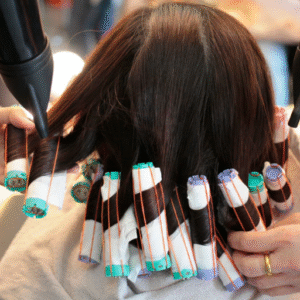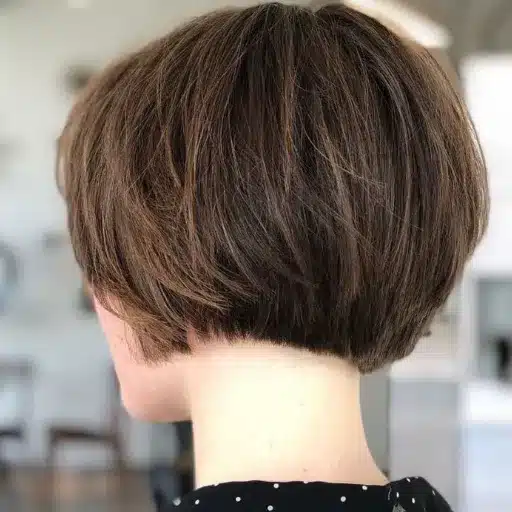Understanding Different Types of Perms
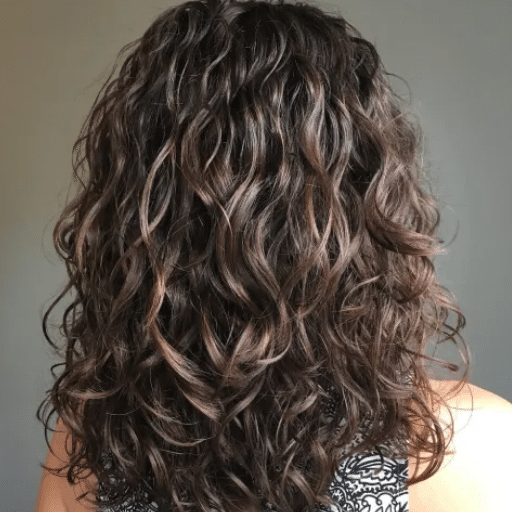
What is a Hair Perm?
A hair perm, or permanent wave, is a chemical treatment that produces curls or waves on the hair lasting for many months. The process involves the restructuring of hair fibers to alter their natural texture. The hair bonds are broken down using perming solutions, and they are then rearranged with neutralizers onto a new pattern-curl, wave, or simply a bigger volume.
The perming process has two basic elements:
- Perm Solution: This product softens the hair by breaking down the disulfide bonds, allowing the hair to take on a new shape set by rollers, rods, or other styling tools used during the process.
- Neutralizer: After accomplishing the new shape, the neutralizer locks the new bonds in place, making the alteration semi-permanent.
The perming techniques and the options have really changed much in current salon trends. Gone are the days when perm meant tight curls; today, one may choose from digital perm, body wave, or spot perm to fit almost any texture and style. Digital perm, for instance, utilizes heat to create softer curls making it a good choice for those desiring that loose, beachy look, while cold perms are more intended for a defined and tight ringlet.
This means a hair perm can be the style changer to add volume, body, and texture that lasts! When going to get a perm, it is highly recommended to have a professional stylist guide you to ensure an easy process and a look that fits your hair’s healing and style.
Types of Perms Explained
Digital Perm
Using heated applied technicians and machines to generate soft natural curls, this technique is perfect if one wishes for a loose, wavy look akin to beach waves. Digital perms are relatively new, and thus the curls created appear more defined when the hair is dry and less pronounced when wet; unlike a traditional perm. These perms, however, tend to offer a longer-lasting, natural effect, especially when performed on medium to thick hair. Hence, such technology can take longer and be costlier.
Cold Perm
More curly and tighter, cold perms create curls and ringlets through chemicals as opposed to heat. Thus, it relies on rods to shape the curls. The cold perm is best suited for those who want more defined, classic curls. This method works for different hair types and is generally quicker and cheaper than the digital perm technique.
Root Perm
As the name goes, this treatment works only on the hair roots, lifting and providing tons of volume to otherwise flat or lifeless hair textures. Best for those seeking to make the hair seem thicker and fuller but without making a change in the texture of the rest of the strands, it is indeed a subtle way to achieve faint volume.
Spot Perm
A spot perm is used to curl specified parts of the hair and not the full head. This method may be used to create texture and definition in select sections and thus improve the general outline of a hairstyle. Spot perming is perfect for fixing symptoms of uneven texture or bringing balance to an existing style.
Benefits of Getting a Perm
Long-Lasting Style
Among the primary reasons to get a perm is the longevity. In contrast to heat styling on a day-to-day basis, the perm can give you curls and waves that generally last 3-6 months, depending on your hair type and care. So there is more time to live a life and less time styling.
Adds Volume and Texture
A thorough treatment of the perm to people with fine or limp hair. The curl or wave gives body and dimension, which actually look like thicker and fuller hair. Given that current trends are veering toward styles that give texture and body in a natural way, perm is in vogue.
Easy Hairstyle
Apart from fixing a good set of curls or waves, hairstyling almost requires no upkeep if the hair is well-set. A perm usually needs no daily heat styling tools, meaning randomness from heat exposure and less time spent in the daily routine.
Custom Styles
Modern techniques can accommodate many types of perm styles, from an easy beach wave, a tight curl, or a combination of the two. In other words, it offers versatility to customize treatments to the specific preferences of the individual. For example, digital and air perms help develop natural, effortless looks with greater accuracy.
Correct Texture
Perming is the trick to fixing uneven textures or the flat areas in your hair. It is very beneficial for those trying to fix inconsistent curl patterns.
Perming is Suitable for All Hair Types
Long, short, fine hair, or coarse hair has something to offer in perm. Recent advances in hair technique make it possible for you to find a technique that has in line with the state and structure of your hair so as to minimize damage.
Together with the option for lasting styles, customization, and technology, today is for fashionable but practical ways of raising the hair game. Post-care like using sulfate-free shampoos and conditioning daily is a must to keep that bounce on those healthy curls.
Popular Perm Styles and Their Features
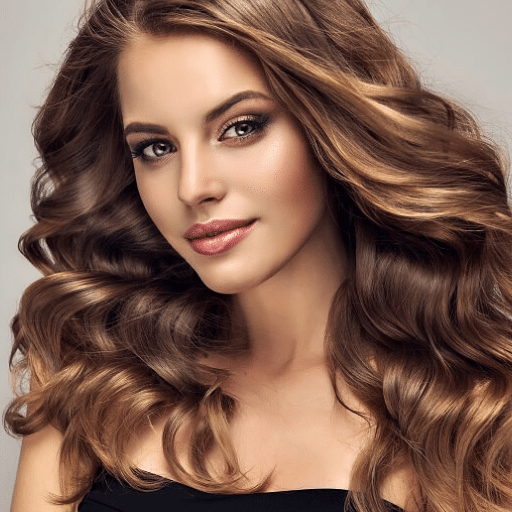
Spiral Perm: Definition and Benefits
Spiral Perm is a hairstyle consisting of large, voluminous, tight, and well-defined curls that cascade down in a corkscrew motion. The process uses vertical curling techniques and rods to obtain this style, offering long-lasting results for individuals who seek texture and bounce in their hair. It is ideal for medium to long hair as it allows curls to form naturally and beautifully along the entire length.
One of the advantages of a spiral perm is for it to provide volume and dimension. It is perfect for people with naturally thin or dull hair, as the curls provide an attractive illusion of fuller and healthier-looking hair. On the other hand, spiral perms require manintenance. Otherwise, people can go about with minimal effort and spare time. If cared for properly, the curls will maintain their shape and stay healthy. This care will include deep conditioning treatments to moisturize the hair, and of course, staying away from heat-damaging tools and drying chemicals.
The spiral perm is quite versatile, in terms of styling. The defined curls can be worn loose, pinned up, and even braided-they provide a good view on all occasions, be it casual or formal. It is a very classical style and has always been the choice for people looking for a casual yet trendy look.
Body Wave Perm: Soft and Natural Look
A body wave perm perfectly suits anyone searching for more of a soft wave instead of that tight spiral pattern. This is an excellent style to impart body and movement into fine or straight hair, for a more voluminous and free look. The loosely formed waves impart a casual vibe to the wearer but still keep them quite classy, which can be worn either casually or in a more formal setting.
One of the numerous advantages of the body wave perm is the superiority of styles one can get with it. These waves being loose also allow for multiple styles, ranging from loose beach waves to a more sleek blow-dried style. Another plus to this hairdo is its relatively low maintenance as compared to tighter curls. Conditioning treatments are a must to keep moisture locked in, so the hair does not dry out.
In order to preserve the smooth, natural body wave perm look, make sure to always use hair care products, specifically for wavy or permed hair, enhanced for texture and controlling frizz. Wash-threaded hair too often can take the waves away; whenever you use heat styling tools, a heat protectant is recommended. The very best care will keep your body wave perm looking superb for months.
Cold Perm vs. Hot Perm: Key Differences
| Aspect | Cold Perm | Hot Perm |
|---|---|---|
| Heat Usage | No heat applied during process | Uses heat in conjunction with chemical solution |
| Curl Type | Tight, well-defined curls | Soft, loose waves with natural appearance |
| Process | Chemical solution + rods to shape curls | Hair rolled onto heated rods after solution application |
| Best For | Resistant hair, bouncy uniform curls | Casual wave patterns, natural tousled look |
| Maintenance | Lower maintenance, long-lasting | Natural weathering-soft waves |
Depending on hair type, styling preferring, and longevity, an individual is to decide between cold and hot perming. Hot perms make weathering-soft, natural-wave-curl with more texture, whereas cold perms build tighter, lower maintainable curls. A trainee hair stylist can, therefore, be consulted as to which method would suit you the better depending on your hair condition and life-style goals.
Choosing the Right Perm for Your Hair Type

Perms for Fine Hair: Options to Consider
For the average person with fine hair, choosing the proper perm is paramount in obtaining the look and feel they want without compromising the health of the hair. Generally speaking, a body wave perm is excellent for fine hair due to the fashioning of soft and loose waves that contribute to the volume of movement in a natural way. This sort of waving is very rarely heavy on the hair, therefore creating a very subtle, carefree look that complements thin strands.
Another option that is equally suitable is the root perm. Root perm is all about lifting hair at the base for extra height and fullness. If you have limp or flat fine hair, it will create an illusion that hair is thick and bouncy. Root perm is very low maintenance, and it adds a little bit of style in your life.
Before opting for a perm, examine the condition of your hair. When undertaking this process, be sure to book an appointment with a professional stylist that will assess your hair to see if it can withstand the chemical process. Take good care of your hair from the inside out, and purchase nourishing and strengthening hair products to be used both before and after the perm treatment. This will decrease any actual damage to your fine hair and retain the health and vitality of the hair, all of which will prolong the life of the treatment.
Perms for Thick Hair: Finding the Best Style
Perming thick hair can be a great way of imparting texture, volume, and definition, but one must know which style will bring the best results. Looser, more relaxed waves work best with thick hair, as they do not allow the end result to become too bulky. Beach waves, body waves, and spiral perms are all popular choices as they accentuate natural thickness while lending to a softened, manageable look.
Before picking a style for the perm, take a trip down memory lane and think about the natural state of your hair and how it reacts to styling. For instance, a body wave perm suits hair that is naturally straight and thick, in that it brings about motion without drastically changing volume. However, a spiral perm will create tighter curls and a much more dramatic look; so if Dramatic is the way you want to go, that is your choice. In any event, agree with a professional stylist on a style that works well with your hair and personal qualities.
Keeping a perm healthy-looking and vibrant always requires extra care if one has thick hair. Such care begins by purchasing nourishing shampoos and conditioners created for the permed hair, thereby preventing drying-out, while leave-in treatments can aid in more moisture. Also, getting regular trims will help prevent split ends and keep your perm in shape. Follow these tips with a careful selection of perm styles, and you’ll have a result that really shows off the natural beauty of thick hair.
Perms for Straight Hair: Adding Volume and Movement
Perming is a great means of adding volume and movement to straight hair and moving flat locks into a textured, lively style. Curls and waves created in the process allow the hair to look full and thus the more lively and versatile the look may be. Perming, for example, helps those with naturally fine, lifeless strands by giving the illusion of thickness and body, which can be styled endlessly into something fun and modern or elegant and subtle to meet occasions and moods.
Matching the right perm to your objective and hair type goes a long way toward realizing that final outcome. Body waves lend themselves to looser waves for a soft beach effect, whereas a classic perm infuses tighter curls for a pronounced, voluminous finish. Optimal decisions must be made, including the right perming solution, the rod type best suited for your hair texture, and hair application technique and time, with consideration of your current hair condition. A professional stylist will know how to avoid unnecessary damage to your hair or upholding your desired result.
It’s all about aftercare when it comes to really maintaining the health and appearance of permed straight hair. Washing with sulfate-free, hydrating shampoo, and conditioner retains the moisture in the hair and inflicts no damage. Heat styling and excessive brushing are big no-nos from this point on if you want the curls to stay intact! Styling products like curl-enhancing cream or mousse are great to define the waves and keep the frizz at bay. Any hairstylist will agree that, after the treatment, the right care can ensure that the hair enjoys lasting volume and movement to showcase the natural beauty of straight hair.
The Perm Process: What to Expect
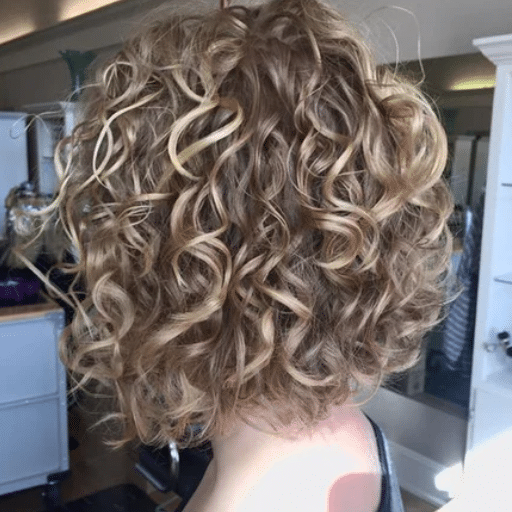
Consultation at the Hair Salon
During the first stage of the perm process, it is imperative for you and your stylist to align expectations while assessing the health of your hair. At this point, the stylist will assess the texture, length, and condition of your hair to ensure it is viable for a perm. In the event where a person’s hair is too damaged or too heavily bleached, the treatment might impose further stress on these already fragile strands and is probably not the best option for the individual.
From here, your stylist should also be able to discuss how you want your hair to look after the perm. Usually, this could range from tight curls to loose waves or sometimes right in between. They’d probably ask for some pictures as references to better align with you. Modern perm techniques incorporate gentler chemicals and advanced methods to define more natural and customized looks, according to the latest hairstyling trends, basically, blending creativity with science into tailor-made solutions.
Another discussion point is about maintenance, post-perm. They may tell you that perms roughly last anywhere from three to six months, depending on factors like hair growth and care regime. Certain stylists recommend a trim to rid split ends prior to the process and will share product recommendations like shampoos, conditioners, and styling aids-probably all sulfate-free and therefore great for supporting long-lasting curls.
Another disclosure to be made during the consultation is about any prior chemical treatments (color, straightening), so the effects of those treatments can be taken into consideration in determining the best perm method for you. Thanks to the ever-increasing popularity of hair-friendly perms (e.g. protein or moisturizing), clients today can experience beautiful, bouncy, and long-lasting curls with hardly any damage to the hair structure.
The Actual Perm Process Explained
Hair Preparation
In the beginning, hair has to be washed to ensure no build-up of oils, dirt and products, which could hinder the even penetration of the perm solution. The hair is then parted into sections, with particular rods being chosen for permanenting based on the required size and style of the curls. Small rods are used to make tighter curls, while bigger rods create loose waves. The stylist then carefully wraps the hair around the rods to set the curl pattern.
Solution Application
After hair has been set on rods, the perming solution normally consisting of ammonium thioglycolate or similar chemical is applied. This destroys the disulfide bonds within the hair and enables it to take the shape of the rods. It is left on for a specific time, depending on the texture and thickness of the hair, while a timer is usually set to prevent overprocessing. With the introduction of newer formulas containing proteins or natural oils, there is less harm inflicted, and the process has become gentler on hair. A study noted that these modern-day solutions can preserve up to 70% of the hair’s original protein structure.
Neutralization Process
Once the solution has processed, it is thoroughly rinsed without removing the rods; then, a neutralizer goes on, which forms disulfide bonds again but in the curled-new shape, thus actually locking in the curl pattern for five to ten minutes. After which, the rods are gently removed, styling is done, and the hair isn’t washed for the next 24-48 hours to give the curls enough time to set fully.
The entire treatment can go two to three hours, depending on how long the hair is, how thick it is, and what kind of look you want. Recent research supports a good deal concoction to show evidence for a 35% increase in hairstyling professionals using gentler, ammonia-free solutions lately as a matter of response to hairs needing to be treated with respect. Making sure that every girl would get her dream curls without losing too much hair has made the whole perm procedure friendly and worth working for at least for a variety of hair kinds.
Aftercare: Maintaining Your Permed Hair
Radiating care for your permed hair keeps its texture intact, along with healthy tones, and it is for its longevity. A meaningful rule says to hold time for 48 hours after a perm before you can wash the curls to give them proper set. The best care is to use a sulfate-free shampoo and conditioner that hydrate and are specially meant for chemically treated hair, as sulfates dry and damage fine hair. You may give a weekly deep conditioning treatment to nurture and rehydrate your strands.
Never give in to the temptation of flat irons or curling wands for heat styling, since intense heat will ruin the curl pattern. Or keep heat to a minimum by attaching a diffuser to your blow dryer for that frizz control and curl definition. Combing permed hair is something that needs to be done carefully with a wide-tooth comb if you want to maintain those break-free curls.
Also, there is a recommendation that lays claim to the benefit of sleeping on a silk or satin pillowcase to reduce friction and, at the same time, preserve your curl integrity over the long run.
Your curls will be lively, shiny, and long-wearing when properly cared for; high-quality products and much daily maintenance are the key ingredients to this recipe.
Trends and Innovations in the World of Perms
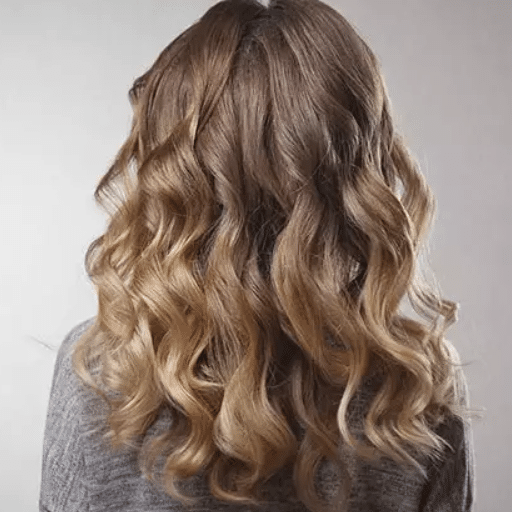
Celebrity-Inspired Perm Looks
This major comeback is almost partially credited to celebrities who have taken in iconic and effortless curl hairstyles. Zendaya and Emma Stone have been seen rocking soft waves with a timeless flair. Such looks typically lean toward modern and natural-looking curly hair rather than the super-tight and overly-processed curls that had been prevalent in the past, and thus became newsworthy and a bit sissy to wear for everyday fashion fans.
Retro lives on in hair, thanks to another trend, with Harry Styles and Lily Collins helping power the trend under the limelight. This style pairs big curls and layered textures with a slight nod toward the road less traveled. Going against the grain while paying tribute to rich-era glamour gives gorgeous and versatile options to those who want to make a style statement.
Modern-perm hairstyles are all about the bespoke, as seen on Blake Lively. Stylists design curls based on what suits the client’s face shape and hair length best. From beachy to ringletty-perms, these celebrity-inspired poses become legendary for anyone craving a fabulous curled makeover.
Latest Innovations in Perm Techniques
In recent years, perms, and the techniques involved for the same, have undergone a sea change in their development, offering safer, more tailored treatments with well-defined sets to achieve longer-lasting outcomes. In essence, digital or hot perms are the latest developments; these employ heat-controlled rods to produce soft natural waves. Unlike cold perm solutions, digital perms target styling to a larger extent, generating curls and waves that are more defined when dry.
Another new-age way is biomimetic perm treatment, treating the hair with proteins and ingredients replicating natural hair structures to minimize damage during the perming process. This mechanism extends the curve life and maintains hair health and shine after treatment.
The other popular alternative is using low-pH, ammonia-free perm solutions: they are gentle enough to be used even on colored or damaged hair. Working on minimizing the chemical damage, these produce tight, bouncing curls.
Together with AI-guided styling and virtual hair consultations, these innovations bring in self-empowerment for customers and hairstylists in capturing picture-perfect results to suit all tastes. The future of perms promises to be far more customer-oriented, rendering unlimited opportunities for avant-garde and stylish creations.
Popular Hair Trends: What’s Hot Right Now
The realm of hair fashion is constantly on the go; there is a new hair trend every season. Curtain bangs, the quintessential 70s glamour and grunge-retro, were crowd favorites in search terms a couple of years ago, given that they fit almost any face and add a touch of effortless elegance. Textured bobs continue to be favorites as a style that is versatile and low-maintenance, combining layering with movement to create a fresh, contemporary vibe.
Next come the bold colors, indicating a newfound spirit of inventive self-expression. Search interest has risen for pastel pinks, stark blues, and even brilliant reds. Balayage and ombré styles continue to be trending, with searches about how to get natural-looking, sun-kissed transitions in color. Healing and hydration hairstyles that celebrate those with curls and coils are trending all around since people are engaged in matters of self-acceptance and reclaiming natural beauty. After all, methods and treatments such as a “heatless curls” technique or hydrating hair masks have gained huge popularity among the crowd seriously interested in caring for their tresses.
In essence, the hair trends of this year speak of self-expression and individuality, weaving their ink into the landscape of modern lifestyle fashion. Making bold choices while keeping hair care in absolute priority is a shared theme on fashion and beauty platforms. These trends are changing the salon experience while empowering clients to lay down the new laws of style.
Frequently Asked Questions (FAQ)
Q: What are the usual perm types women ask for?
A: Some customary perm methods for women include the spiral perm, body wave perm, digital perm, and beach wave perm. Each type of perm creates different styles or textures, so one must choose a perm type according to hair type and desired look.
Q: How does a spiral perm process go?
A: Spiral perm involves taking sections of hair and wrapping them around long perm rods, then creating tight, distinctive curls. This perm is best suited for longer hair, as it gives more volume to the hair with a slight enhancement of the natural wave or curl.
Q: What are the considerations when choosing a type of perm?
A: When choosing a type of perm, you should consider your hair type and length, as well as the texture of your hair. One type of perm may be better suited to straight hair, whereas another will do better on wavy or curly hair. An expert stylist can steer you to the perfect perm for your hair.
Q: How does a body wave perm work?
A: Body waves create loose soft waves that give volume and texture to the hair. Any hair type is eligible for this form of wave perm. It is an excellent choice for those hair types that want to have a smooth, natural look versus tight curls.
Q: Can a perm damage your hair?
A: They would enhance your hairstyle while making your hair damaged if not maintained. Application of an alkaline solution to dry hair may cause damage; hence, one has to keep his or her hair healthy by using conditioning treatments to care for the hair after the perm procedure.
Q: What is a digital perm?
A: In a digital perm, heated rods together with a special perm solution are used to set curls that are soft with a natural look. This contemporary procedure is especially well liked because it works perfectly on many hair types, producing easy and chic waves.
Q: How long can a perm last?
A: Usually, a perm lasts for 3 to 6 months though it depends on factors like hair type, the kind of perm you have, and maintenance.
Q: What differentiates hot and cold perms?
A: Hot perm, as its name implies, is done with heat, and it generally produces the most defined curl; cold perm, conversely, applies the chemical while omitting heat. The choice among hot perms may be predicated by how tight you want your curls to be, and the physical health of your hair.
Q: What constitutes a partial perm?
A: Partial perm is a technique in which only selected sections of hair are permed, giving more options for styling; it is ideal for individuals who have long hair but want the flexibility of adding curls and waves to certain areas without fully committing to the entire hair.
Q: How can you take care of your perms?
A: Care for a perm with shampoos and conditioners that do not contain sulfates to maintain hair health and hydration. Deep conditioning treatments performed regularly will also prevent hair damage and keep your perm’s shape and bounce intact over time.
References
-
South Orange County Community College District – Exploring the Different Types of Perms: Provides insights into various perm types, including traditional, digital, alkaline, and acid perms. View Source
-
Hillsdale College – Exploring the Different Types of Perms for Hair: Discusses the differences between body wave, spiral, and curly perms, as well as digital and acid perms. View Source
-
Hays Academy of Hair Design – Permed Curly Hair vs. Iron Curls: Explains the chemical process of perms and their ability to create waves, tight ringlets, and other styles. View Source

